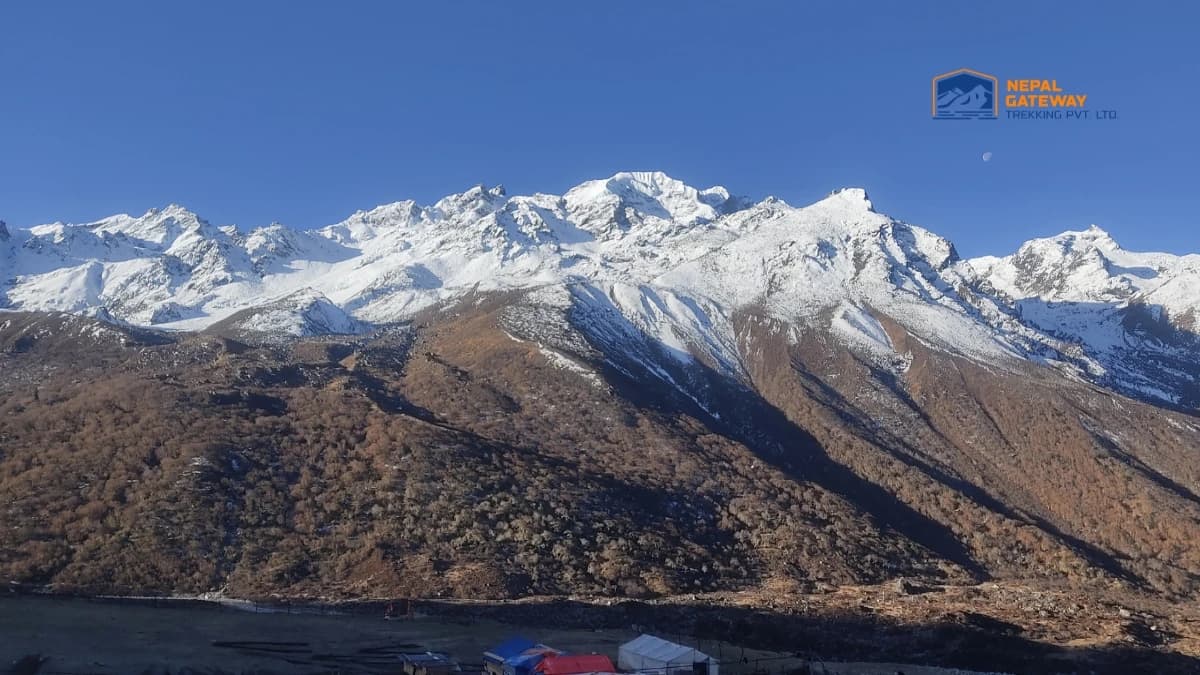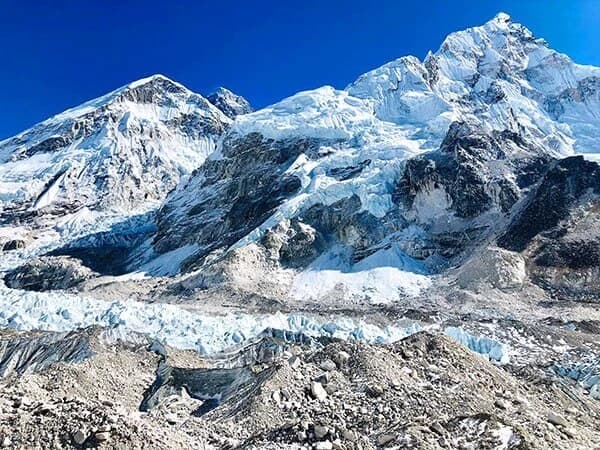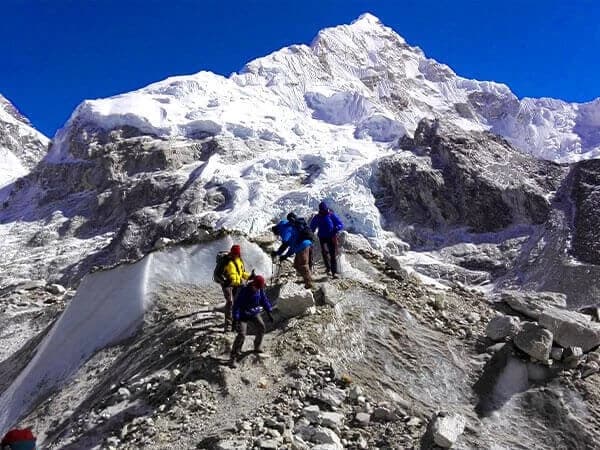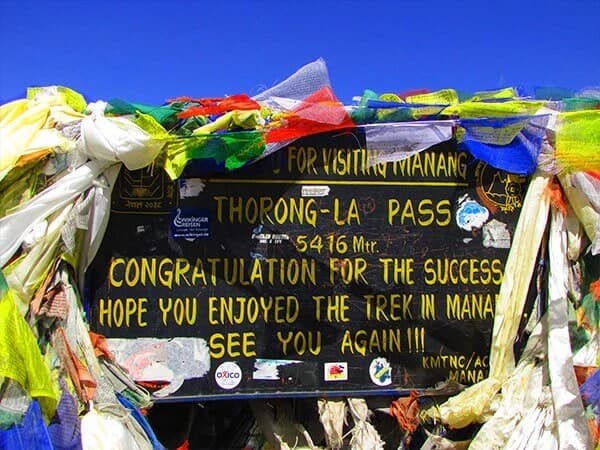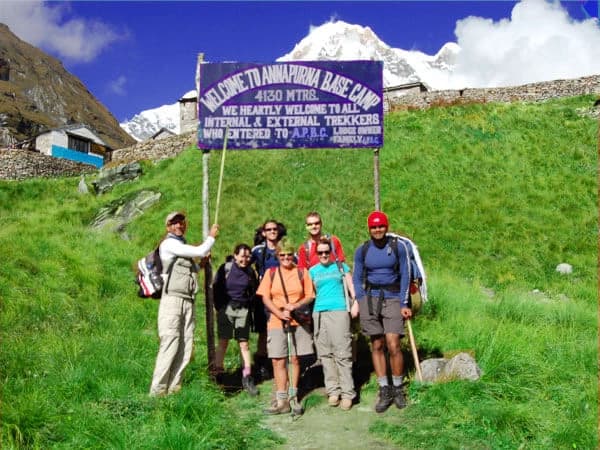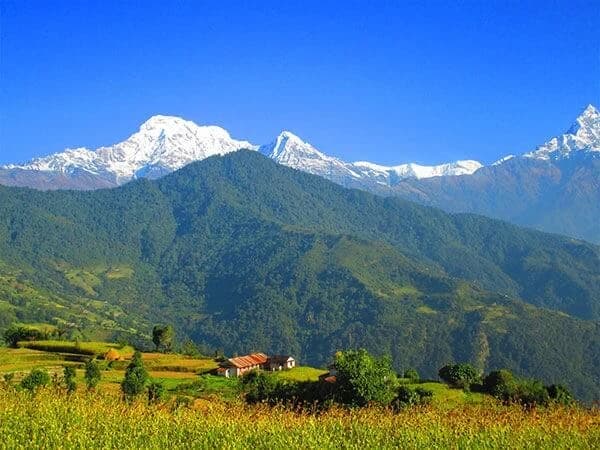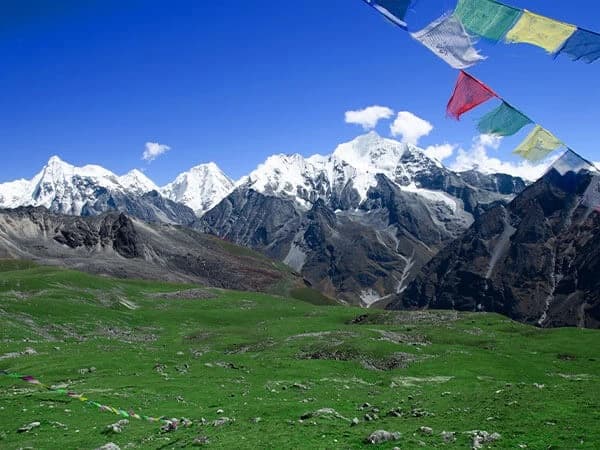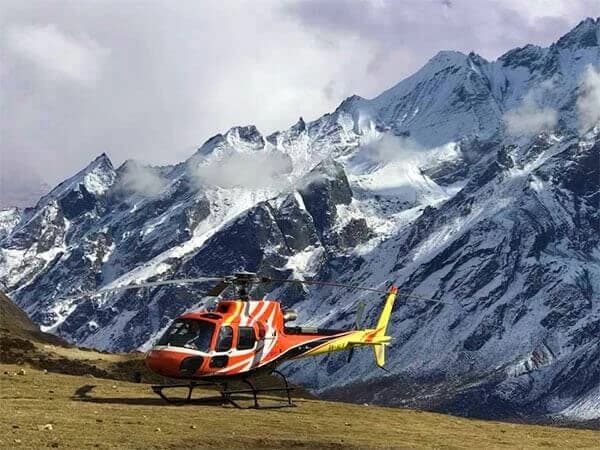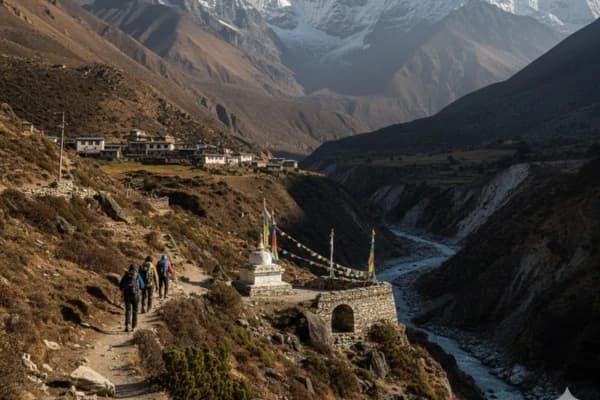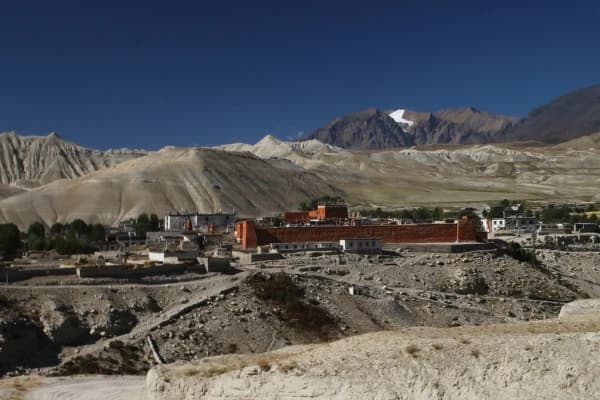You’ve read about all three treks, and they all sound incredible, but the decision-making process can feel overwhelming. With conflicting advice, glowing reviews, and breathtaking photos, it’s easy to get confused. After all, trekking in Nepal might be a once-in-a-lifetime experience, and you want to make the right choice.
Whether you prefer a serene journey like the Langtang Valley Trek, a cultural adventure like the Annapurna Base Camp Trek, or the challenge of the Everest Base Camp Trek, each offers something separate. The choice between Langtang vs Everest vs Annapurna ultimately depends on your personal preferences and what kind of trekking experience you're looking for.
The pressure is real. With so much information available, it’s tough to know which trek will offer the experience you’re looking for. You’re worried about making the wrong decision and possibly not fully enjoying your trek.
Don’t worry! We'll take care of you. We'll compare the highlights, difficulty levels, expenses, and ideal trekking seasons of Langtang vs Everest vs Annapurna in this blog. With the aid of this tutorial, you can choose the trek that suits your preferences, whether you’re a beginner or an experienced trekker.
Let’s take the guesswork out of the equation and get you closer to your dream Himalayan adventure!
What Are the Key Differences Between Langtang, Everest, and Annapurna Treks?
Let's start by analysing the Annapurna region, Everest region, and Langtang region, the three most popular Nepali hikes. Each of the three has special attributes, even though they all offer breathtaking experiences and breathtaking views.
- Langtang Valley Trek is ideal for those seeking solitude and a more peaceful experience. With fewer tourists, it offers a closer connection to nature and the Tamang culture. The region features beautiful forests, alpine meadows, and local villages.
- Everest Base Camp Trek is the most iconic trek in Nepal, attracting trekkers from around the world. This challenging trek takes you close to Mount Everest, the tallest mountain on Earth, and offers stunning views of surrounding peaks like Nuptse and Lhotse. Along the way, you’ll experience the rich Sherpa culture.
- Annapurna Base Camp Trek offers a diverse landscape, from lush forests to terraced rice fields, and culminates in an awe-inspiring view of the Annapurna Range. The trek combines nature with cultural experiences, making it an excellent option for those seeking variety.
Here’s a Quick Comparison of Key Differences:
|
Trekking Region |
Difficulty |
Duration |
Altitude |
Scenery |
Crowds |
|
Langtang |
|
~10 days |
~4,984m |
Forests, peaks, and local villages |
Low |
|
Everest |
Challenging |
~12-14 days |
~5,364m |
Glaciers, Everest, Sherpa culture |
High |
|
Annapurna |
Moderate |
~9-12 days |
~4,130m |
Rice terraces, forests, and alpine views |
Medium |
Which Trek Offers the Most Stunning Scenery and Landscapes?
Nepal is known for its jaw-dropping landscapes, and each trekking region offers something uniquely beautiful. Here’s how each trek stands out in terms of scenery: Langtang vs Everest vs Annapurna.
- For anyone looking for a serene, natural getaway, Langtang is the ideal holiday spot. It is a serene setting with breathtaking scenery as it meanders along glacial streams, alpine meadows, and quiet woodlands. The simplicity and natural appeal of the place are what make it so beautiful. It was also heavily affected by the 2015 earthquake, and trekking here helps support the local community in rebuilding.
- Mount Everest breathtaking snow-covered peaks like, Nuptse, Lhotse, and Ama Dablam, Everest provides the quintessential Himalayan experience. The trip is unforgettable because of the Sherpa communities, glaciers, and breathtaking scenery. The sunrise view from Kala Patthar, which is frequently regarded as one of the most breathtaking vistas in the world, is one of the trek's highlights.
- Annapurna boasts an incredible array of landscapes. You will trek along lush, temperate valleys with rice paddies and multicolored rhododendron forests before the higher, icy altitudes surrounded by colossal mountains above 7,000 meters become visible. The range of scenery, from tropical valleys to alpine regions, is a unique getaway for those who enjoy the outdoors.
What Are the Highlights of the Annapurna Base Camp?
The Annapurna Base Camp trek is famous for a mix of luxury, adventure, and stunning natural scenery. Here's why this trek is different from others:

- Hot Springs at Jhinu Danda: Nothing is more relaxing than resting in Jhinu Danda's natural hot springs after a long day of hiking. It's a perfect method to unwind your muscle pain while admiring the nearby mountains.
- Charming Villages: The Chhomrong and Ghandruk villages are cultural gems. The villages are in Gurung, and you will have the chance to see their traditional way of life, rich culture, and hospitality. The stone houses and the terraced fields are picturesque, and one gets a view of rural Himalayan life.
- Sunrise at Poon Hill: If you’re up for an optional side trip, Poon Hill offers famous sunrise views in Nepal. From this location, you may take in expansive views of the Annapurna and Dhaulagiri ranges as the sun lights up the snow-capped peaks.
- Annapurna Sanctuary: The heart of the trek is the Annapurna Sanctuary, a stunning glacial basin surrounded by peaks towering over 7,000 meters. The dramatic landscapes and the sense of awe when entering the sanctuary make it a trekker's paradise.
Everest Base Camp Trek Difficulty Compared to Langtang and Annapurna
The Everest Base Camp trip is more difficult than the Annapurna and Langtang treks. Here's how it's different: Annapurna against Everest versus Langtang. The Everest trip is perfect for someone looking for a challenging yet rewarding experience because it is higher, longer, and more difficult in terms of terrain.
There are extra expenses and logistics involved because it also includes a trip to Lukla. Although the journey is more physically demanding, witnessing Sherpa culture up close is an experience of a lifetime.
- Altitude: The trek reaches over 5,300 meters, increasing the risk of altitude sickness.
- Terrain: The trails are steeper, longer, and more rugged, demanding a higher level of endurance.
- Weather: Harsh weather conditions, especially during the winter months, can make the trek more difficult.
Quick Summary
- Langtang: Easier + Quieter
- Annapurna: Moderate + Comfortable
- Everest: Harder + Most Rewarding (physically and emotionally)
Trekking Cost Comparison Across Langtang, Everest, and Annapurna?
The trekking costs for Langtang, Everest, and Annapurna vary based on duration, accessibility, and the services included. Langtang vs Everest vs Annapurna – Langtang is the most budget-friendly, Everest is the most expensive due to its remote location and additional logistics, while Annapurna offers a moderate cost with diverse experiences, making it the favorite of trekkers in search of a balance between affordability and variety.
Langtang Valley Trek
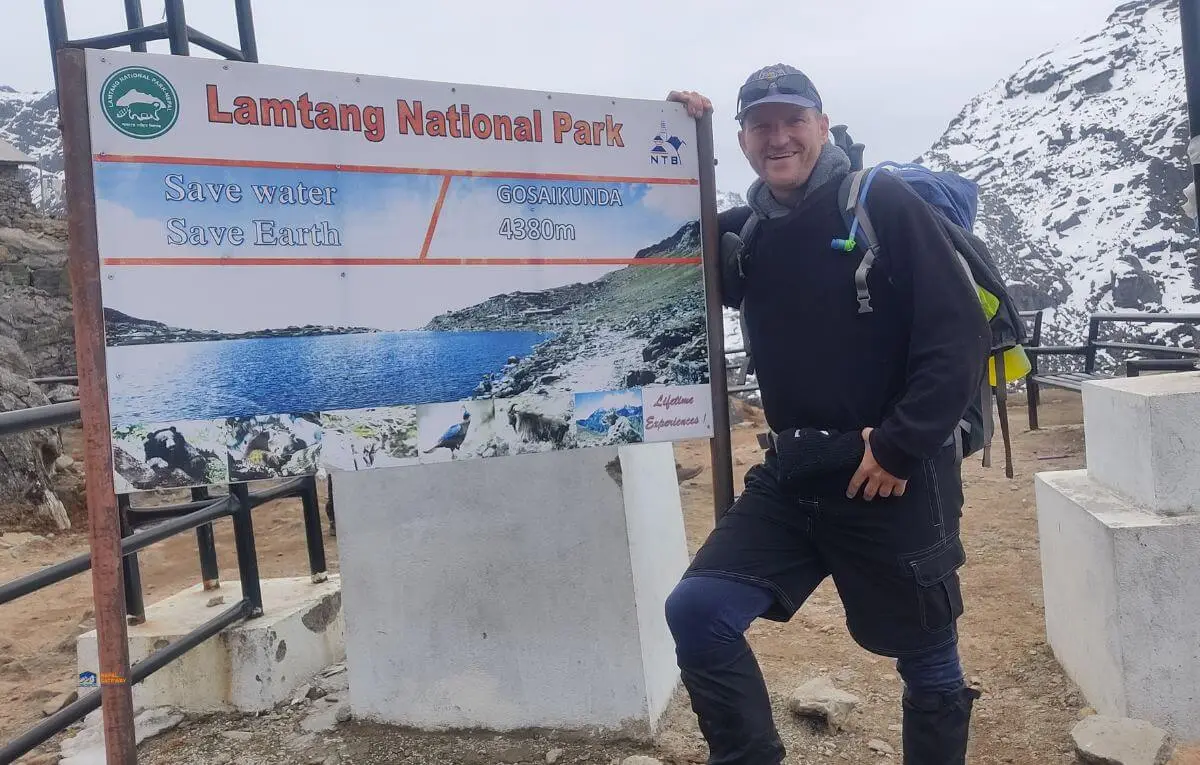
- Duration: 10 days
- Cost: Starts at 760 USD per person (11 - 16 pax, 640 USD)
- Highlights: Moderate terrain, fewer crowds, rich Tamang culture, and stunning views of peaks like Langtang Lirung and Ganesh Himal.
- Details: Includes round-trip transportation from Kathmandu, permits, accommodations, meals, guide, and porter services. Discounts are available for group bookings.
Ready to find the Hidden Gem of the Himalayas? Book your Langtang Valley Trek today and experience peaceful trails, rich Tamang culture, and breathtaking mountain views.
For more exploring journey, view our package Langtang Gosaikunda Lauribina Pass Trek - 15 Days.
Annapurna Base Camp Trek
- Duration: 13 days
- Cost: Starts at 940 USD per person (11 - 16 pax 820 USD)
- Highlights: Diverse landscapes from terraced fields to alpine terrain, cultural immersion in Gurung villages, and panoramic views of the Annapurna and Dhaulagiri ranges.
- Details: Package includes transportation, permits, accommodations, meals, a guide, and porter services.
Experience the Heart of the Himalayas with the Annapurna Base Camp Trek!
If you have less time to spend in travelloing, then view our Short Annapurna Base Camp Trek - 10 Days
Everest Base Camp Trek
- Duration: 14 days
- Cost: Starts at 1,360 USD per person (11 - 16 pax 1210 USD)
- Highlights: Iconic views of Mount Everest, rich Sherpa culture, and visits to landmarks like Namche Bazaar and Tengboche Monastery.
- Details: Includes flights to Lukla, accommodations, meals, a guide, and porter services.

Conquer the Iconic Everest Base Camp Trek – A Bucket List Adventure!
For Longer Duration Trip, view our Package Everest Three High Passes Trek - 19 Days
How Do Cultural Experiences Differ in Each Region?
Trekking in Nepal is a journey into the heart of Himalayan culture, not only the mountains. The specific cultural flavour of each area enhances your experience.
In the Langtang region, you’ll discover the rich traditions of the Tamang people, who are believed to be descendants of Tibetan migrants. Their villages feature intricate stone homes, prayer wheels, chortens, and centuries-old monasteries like Kyanjin Gompa. Interacting with locals, tasting yak cheese from traditional factories, and learning about Buddhist customs make Langtang a peaceful and immersive cultural experience.
The renowned Sherpa community resides in the Everest region, renowned for their mountaineering skills and deep-rooted spiritual beliefs. Along the trail, you’ll pass through important cultural sites like Tengboche Monastery, and you can witness daily rituals, prayer ceremonies, and colorful mani walls. The Sherpa people are welcoming and full of stories about life in the shadow of Everest.
Which Trek Is Best for Beginners?
If you’re new to trekking in Nepal, choosing the right trail can make or break your experience. Here’s a quick guide to help:
- The Langtang Valley Trek is for beginners. It’s shorter, less crowded, and doesn’t need a domestic flight. You’ll walk through peaceful forests, stay in welcoming Tamang villages, and enjoy mountain views without the extreme altitude.
- Annapurna Base Camp Trek is another great choice. The route has excellent infrastructure, a steady elevation gain, and diverse scenery. From terraced fields to alpine landscapes, it keeps the experience exciting yet manageable. Plus, you can soak in natural hot springs at Jhinu Danda.
- Everest Base Camp Trek is more demanding. It’s longer, reaches higher altitudes, and includes a flight to Lukla. While doable for fit beginners, it requires more preparation and endurance.
Langtang vs Everest vs Annapurna – if you're a beginner, the Langtang or Annapurna Base Camp Trek would be your best bet for a rewarding and manageable experience.
Looking for the best trek in Nepal? Explore Nepal Gateway Trekking's top trekking packages and start your unforgettable journey today! Contact us to learn more.
Which Trek Should You Choose?
Still wondering which trek is right for you? Let’s wrap up the Langtang vs Everest vs Annapurna debate with a simple breakdown:
| Preference |
Best Trek |
|
Peace, culture, and budget |
Langtang Valley Trek |
|
Variety, comfort, and scenery |
Annapurna Base Camp Trek |
|
Iconic challenge and prestige |
Everest Base Camp Trek |
If you’re short on time, seeking serenity, and eager for cultural interactions without breaking the bank, Langtang is perfect. It’s peaceful, scenic, and offers a glimpse into Tamang life, with fewer crowds and a moderate altitude.
Annapurna is a perfect destination for those who seek comfort, cultural diversity, and scenic diversity. From rice terraces to mountain peaks, the trail offers top-class trekking facilities and welcoming service and is thus perfect for novices and experienced trekkers alike.
Conclusion
For those seeking culture, quiet, and a less-traveled path, the Langtang Valley Trek is perfect. It is ideal for novices or low-budget hikers because it is highly picturesque and offers an opportunity to interact with the Tamang culture.
The Annapurna Base Camp Trek offers a blend of culture, comfort, and varied landscapes. Hikers seeking a fulfilling but not taxing experience will love it for its medium difficulty, diverse scenery, and friendly people.
The Everest Base Camp Trek offers a once-in-a-lifetime opportunity to be at the foot of Mount Everest for the ultimate adventure. The experience and Sherpa culture are completely unmatched, albeit being more difficult and costly.
Langtang vs Everest vs Annapurna – each trek offers its own unique experience, so choose the one that fits your preferences and goals!
Ready to plan your Himalayan adventure? Contact us today to start your trek with expert guidance and personalized service!
FAQ’s
Do I need a permit for these treks?
Absolutely—trekking in Langtang, Everest, or Annapurna isn’t something you can just show up and do. The Nepali government requires all trekkers to obtain permits for conservation and security reasons. For starters, you’ll need a TIMS card (Trekkers' Information Management System), which registers your presence and supports safety tracking. Each region also requires specific permits:
- Everest Region: You’ll need the Sagarmatha National Park Entry Permit and a Khumbu Pasang Lhamu Rural Municipality Permit.
- Annapurna Region: The Annapurna Conservation Area Permit (ACAP) is a must.
- Langtang Region: You’ll need a Langtang National Park Entry Permit.
Get them in Kathmandu or Pokhara through a trekking agency or the Nepal Tourism Board. Carry them at all times—checkpoints are common.
Can I do these treks solo?
Technically, yes—but whether you should is another story.
- Annapurna and Langtang allow solo trekking, and many independent travelers do it. The trails are well-trodden and populated with tea houses, so you’ll rarely be completely isolated. Still, the terrain can be unforgiving, and if you run into trouble (injury, illness, getting lost), help may not be close by. Hiring a local guide or porter adds safety and deepens your cultural experience.
- Everest Region is a different beast. Solo trekking here is strongly discouraged—not just because of the altitude, but due to weather unpredictability and the scale of the terrain. In fact, there are recent restrictions aimed at curbing solo trekking in high-risk zones. If Everest is your goal, bring a guide. It’s not just smart—it’s the law in some areas.
What kind of accommodation is available?
Across all three trails, tea houses are your mainstay. These are small, family-run lodges that offer a bed, hot meals, and a warm welcome.
- In Annapurna and Langtang, the tea houses are fairly consistent—basic beds with thick blankets, communal dining rooms with stoves, and menus with local and Western meals.
- In the Everest Region, options range from modest tea houses to surprisingly plush lodges with hot showers, Wi-Fi, and even bakeries in places like Namche Bazaar.
Don’t expect luxury—especially higher up—but the warmth of your hosts more than makes up for simple rooms.
How should I train for these treks?
Trekking in the Himalayas isn’t a casual walk—it’s a test of endurance, strength, and mental grit. Start prepping at least 8 to 12 weeks before your departure.
- Focus on cardio training: running, cycling, stair climbing, or swimming 4–5 times a week.
- Build leg and core strength through hiking, squats, lunges, and stability exercises.
- Do long hikes carrying a backpack to simulate the trail experience.
- If possible, train at altitude or on hilly terrain to mimic Himalayan conditions.
Your goal isn’t just fitness—it’s resilience. The fitter you are, the more you’ll enjoy the views instead of suffering through them.
What gear should I bring?
This is make-or-break. Don’t skimp. Key gear includes:
- Sturdy trekking boots (well broken-in, waterproof)
- Thermal base layers (merino wool or synthetic, not cotton)
- A proper down jacket and a windproof, waterproof shell
- Sleeping bag rated to at least -10°C, ideally colder for Everest
- Trekking poles, headlamp, water purification (tabs or filter), and first aid kit
- Daypack and duffel bag if you’re using a porter
Pack light but smart. The Himalayas demand respect.
Is Wi-Fi available during the treks?
Yes, you can find Wi-Fi at most tea houses, especially in lower altitudes. But here’s the catch: it’s slow, spotty, and expensive—especially the higher you go.
- In the Everest Region, many lodges sell prepaid Wi-Fi cards (Everest Link), but don’t expect to stream anything.
- In Annapurna and Langtang, Wi-Fi access is more limited and often restricted to main villages.
If you need regular communication, bring a local SIM (Ncell or NTC) with data, but coverage is hit-or-miss. The real magic of these treks is disconnecting—lean into it.
What kind of food can I expect?
Tea house menus are surprisingly varied, though simple. The staple meal is dal bhat—a platter of rice, lentil soup, vegetables, and sometimes meat. It’s delicious, filling, and comes with unlimited refills.
- Other popular dishes include:
- Momos (steamed dumplings)
- Tibetan bread with jam or honey
- Noodles, fried rice, pancakes, and occasional pasta
Higher up, options thin out and prices rise. Meat gets rarer and less fresh. Vegetarian is safer. Bring snacks (nuts, bars, chocolate) for energy on the trail.
How high will I go on each trek?
Here’s a quick look at maximum elevations:
- Langtang: Around 4,984 meters at Tserko Ri.
- Annapurna Base Camp (ABC): 4,130 meters.
- Everest Base Camp (EBC): 5,364 meters.
The higher you go, the more crucial acclimatization becomes. Everest not only reaches the highest point but also takes you above 5,000m for several days, making it the most demanding in terms of altitude stress.
Is altitude sickness common?
Yes—and it’s no joke. Anyone can get Acute Mountain Sickness (AMS), regardless of age or fitness level. The key is to take it seriously and listen to your body.
Symptoms include headache, nausea, dizziness, and trouble sleeping. In severe cases, it can lead to life-threatening conditions like HAPE or HACE.
Prevention tips
- Ascend slowly—no more than 500m per day once above 3,000m
- Stay hydrated
- Plan acclimatization days
- Avoid alcohol
For Everest and even Langtang, some trekkers carry Diamox, a prescription med that helps with acclimatization. But it’s not a substitute for pacing yourself.
